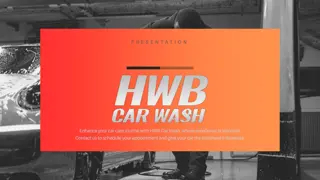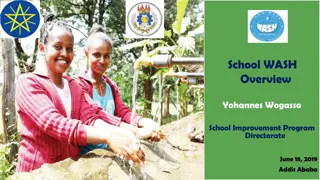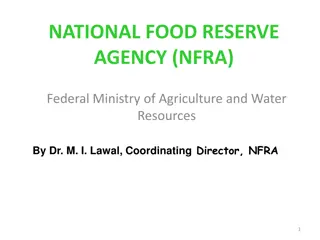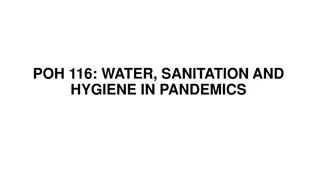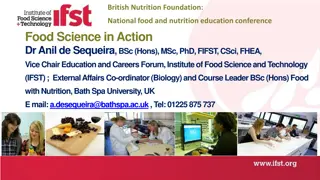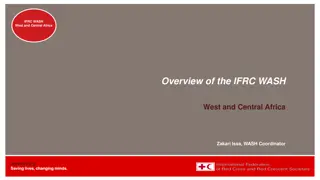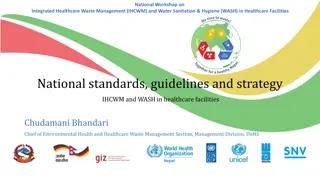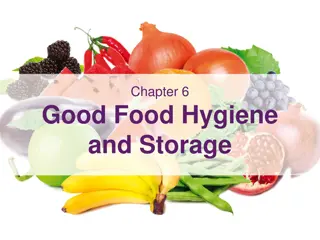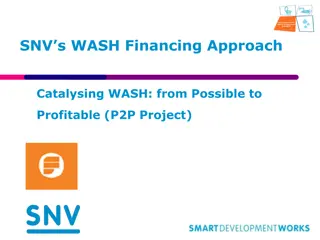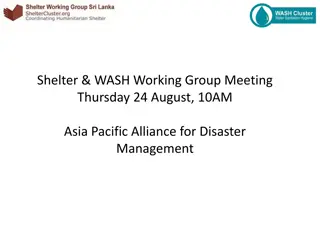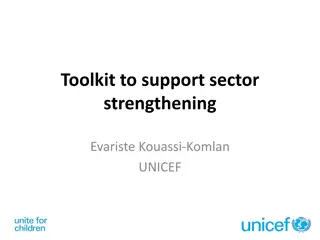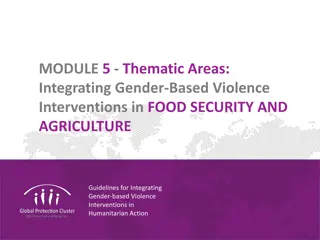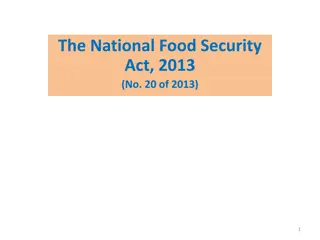Integrating WASH & Food Security Sector Learning Forum
Household-led initiative in water supply construction and upgrade, utilizing various technologies. Major studies on self-supply potential and access levels in SNNPR highlighted. Explore the impact and potential of self-supply in enhancing water, sanitation, and hygiene services.
Uploaded on Mar 07, 2025 | 0 Views
Download Presentation

Please find below an Image/Link to download the presentation.
The content on the website is provided AS IS for your information and personal use only. It may not be sold, licensed, or shared on other websites without obtaining consent from the author.If you encounter any issues during the download, it is possible that the publisher has removed the file from their server.
You are allowed to download the files provided on this website for personal or commercial use, subject to the condition that they are used lawfully. All files are the property of their respective owners.
The content on the website is provided AS IS for your information and personal use only. It may not be sold, licensed, or shared on other websites without obtaining consent from the author.
E N D
Presentation Transcript
Self supply: Integrating WASH & Food security Sector Learning & Sharing Forum on WASH & Food Security 25 June 2015, Elily International Hotel, Addis Ababa Supporting water sanitation and hygiene services for life
Introduction Definition: Household initiative to take the lead (largely or wholly) in constructing or upgrading own water supply It is a package of technologies: water source, lifting device, storage, treatmentmethod or conveyance Water supply sources: It can be any sources One of the water supply service delivery model; & hence acknowledged in WIF & OWNP
SNNPR Traditional well (338) Oromia Rope Pump (37) Community Traditional well (Haramaya 2) HP (47) 100% 89% 15% 17% 15% 0% Traditional well Mechanised well 2 woredas (50) 3 woredas (369) 2 woredas 2011 (50) 94% 95% 88% 100% 35% 20% 99% 99% 90% 86% 85% 30% 92% 97% 70% 49% 54% 43% 100% 100% 96% 100% 88% 16% 100% 100% 98% 98% 92% 68% Drinking Cooking Washing clothes Bathing Watering animals Irrigation. Multiple water Uses
Major studies on self supply Benchmarking study: Unicef understanding the potential contribution of self supply to UAP Potentials & upper ladder Household investment: Unicef Upper ladder household investment in 2011 financed by UNICEF, IRC & RiPPLE A hidden resource: household-led rural water supply in Ethiopia; published by IRC in 2012 Towards a regional assessment of self supply potential in SNNPR, Ethiopia, RiPPLE 2012 supported by IRC Map based self supply potential assessment
Potential towards WASH: Access & service level SNNPR: 1% using own well as main drinking water source, a further 1% using neighbours well (NWI Form 5; total 85000 households; BoWR analysis) Exceptions: 20% in some woredas, 50% in some kebeles (BoWR) Minimum estimate, limitation of simple questions and one-time surveys Potential: 29% take drinking water from surface (river, lake, pond) and 31% from unprotected community sources (springs or wells) (Total 2.5 million households)
Potential towards household irrigation Strategic shift from large and medium scale irrigation project to small scale particularly the household irrigation in order to address the wider parts of the rural community. Household Irrigation Sector Strategy 2013: More than 650,000 households are to be benefited (about 5 million people) from household irrigation Double production and incomes, promote food security
Food security & investment in family wells Decreasing food insecurity Improving food sufficiency Saving expenditure with own produce Food production before and after family well construction/ pump installation. SNNPR (well) Before 82% 4% 3% 0% 1% Oromia (pump) Before 39% 59% 20% 17% 0% After After Food insufficient all year Food produced is enough for all year Food produced is enough to sell as well Save expenditure with own produce Invest earned money in other activities 1% 76% 5% 3% 1% 0% 88% 61% 51% 49% Sources: Sutton et al 2012: a hidden resources
Key issues: Coordination among key stakeholders and integration Fragmented implementation of self supply without considering its holistic approach Perception of inferior quality (WQ) Incremental improvement or one time high service level
Both Agriculture & Water sectors working on household investment: about the same family Coordination is a gap E.g. in SNNPR in 2006 EC: 300,000 HDWs & 20,000 RPs in SNNPR by Agriculture 56,000HDWs & 10,000RPs by Water Bureau Coordination
Assessing potential Creating demand Supporting technology choices Promoting private sector involvement Supporting access to finance Strengthening coordination, innovation and learning Monitoring implementation Holistic approach
Fig 5.1 Water quality in different source types (400) TTC/100ml 50% 47% 46% 45% 0 1-10 11-50 >50 45% 42% 39% 40% 35% 35% 30% 30% 25% 24% 25% 22% WQ from different water sources in SNNPR (Sutton 2011) 19% 19% 20% 16% 15% 15% 15% 14% 14% 13% 15% 10% 5% 5% 0% Conventional handpump (55) Rope pump(35) Apron(26) Drum (80) No protection (229)
Further reading: A Hidden Resource report www.irc.nl/page/74548 Policy guideline and other docs www.cmpethiopia.org All links at www.ircwash.org/selfsupply IRC s Ethiopia WASH blog www.ircwash.org/ethiopia RWSN www.rural-water-supply.net/en/self-supply







